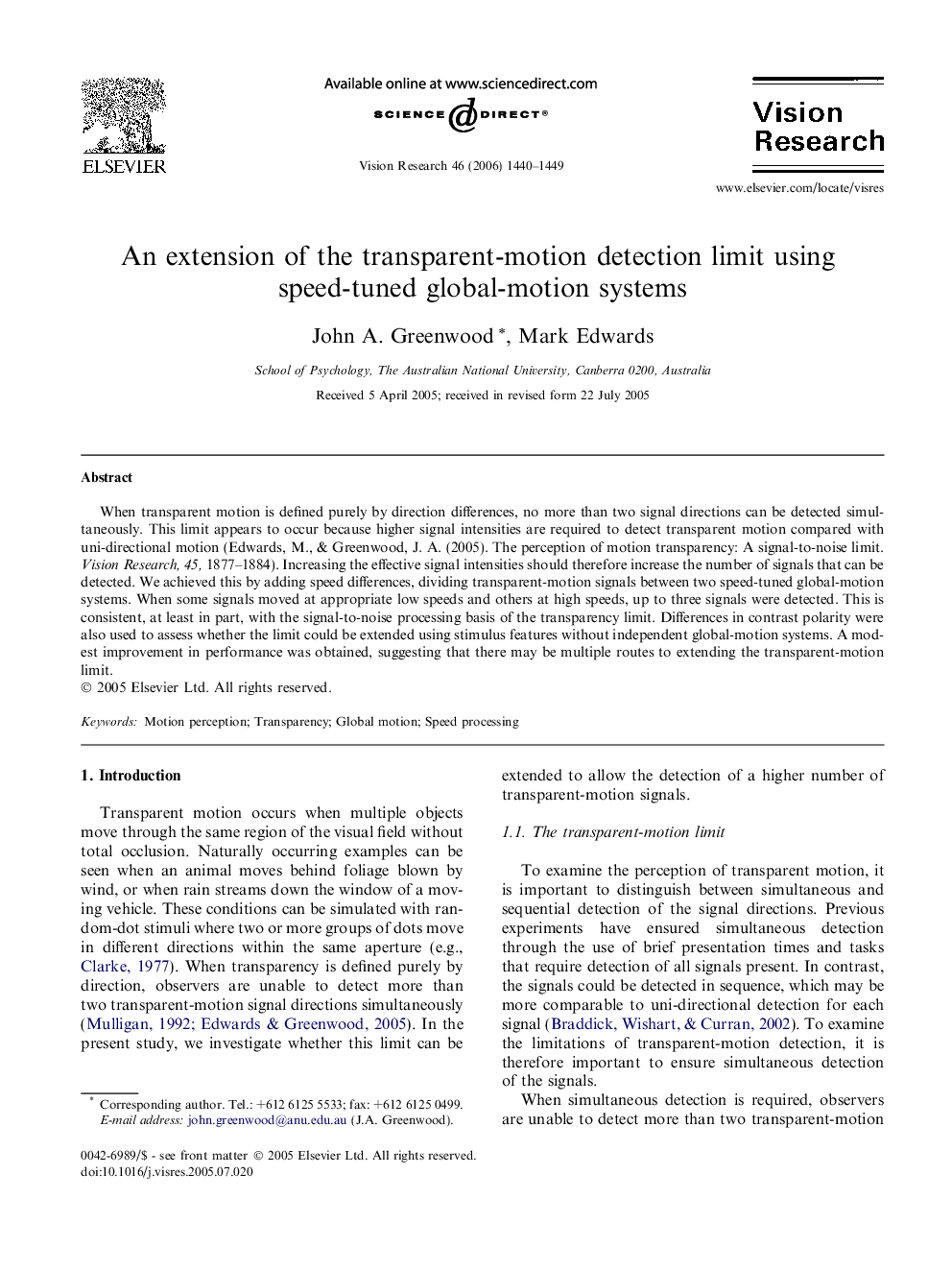| Article ID | Journal | Published Year | Pages | File Type |
|---|---|---|---|---|
| 4035316 | Vision Research | 2006 | 10 Pages |
When transparent motion is defined purely by direction differences, no more than two signal directions can be detected simultaneously. This limit appears to occur because higher signal intensities are required to detect transparent motion compared with uni-directional motion (Edwards, M., & Greenwood, J. A. (2005). The perception of motion transparency: A signal-to-noise limit. Vision Research, 45, 1877–1884). Increasing the effective signal intensities should therefore increase the number of signals that can be detected. We achieved this by adding speed differences, dividing transparent-motion signals between two speed-tuned global-motion systems. When some signals moved at appropriate low speeds and others at high speeds, up to three signals were detected. This is consistent, at least in part, with the signal-to-noise processing basis of the transparency limit. Differences in contrast polarity were also used to assess whether the limit could be extended using stimulus features without independent global-motion systems. A modest improvement in performance was obtained, suggesting that there may be multiple routes to extending the transparent-motion limit.
